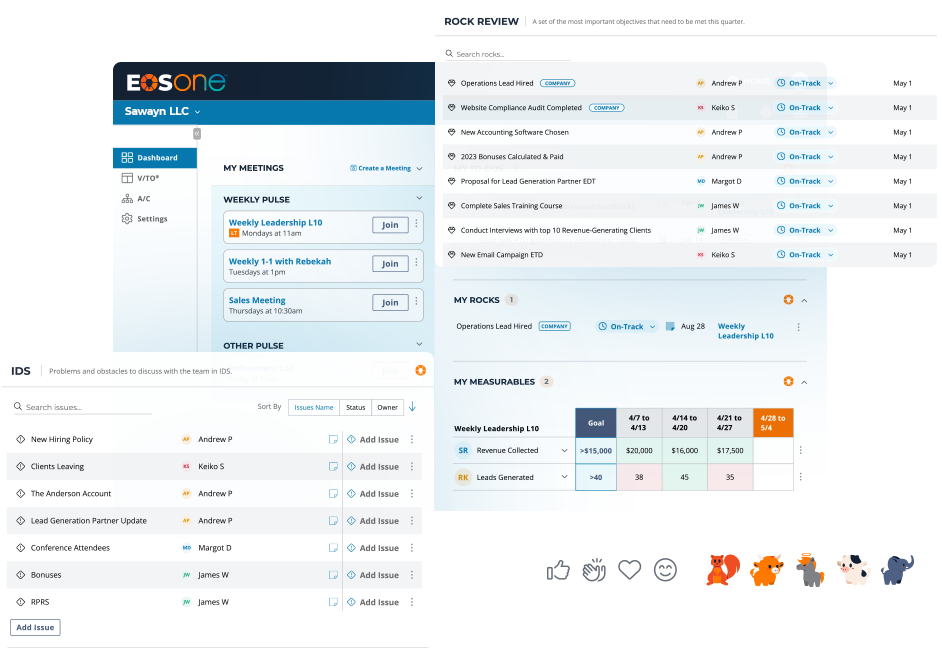
At a recent conference, I revisited a powerful principle that directly impacts how businesses can elevate performance: the Yerkes-Dodson Law. Dating back to 1908, this concept remains highly relevant today, especially for businesses running on EOS®. The Yerkes-Dodson Law provides key insights into how leaders can optimize their teams by effectively creating tension to maximize performance within the organization.
The Yerkes-Dodson Law and Tension as a Tool
The Yerkes-Dodson Law highlights a direct correlation between tension (T) and performance (P). Simply put, as tension increases, so does performance… to a point. When there is no tension in an organization and not much is asked of people, there are lower levels of performance. As tension increases, through higher expectations of performance, so does performance, until that tipping point when performance begins to fall with too much tension.
In the EOS framework, tension can come from a variety of sources: setting Quarterly Rocks, reviewing weekly to-dos, tracking progress on scorecards, hiring and firing around Core Values, and driving accountability through regular Level 10 Meetings. These Tension Tools® are designed to set clear expectations and ensure that everyone on the team is aligned and focused on achieving the vision.
But here’s where Yerkes-Dodson offers a valuable insight: tension isn’t just something to be managed; it’s a tool for driving performance. When a team aligns with the company’s Core Values, Rocks, and measurable goals, they step up.
The increased pressure pushes them past boredom and entitlement into what bestselling author and leading expert on peak performance Steven Kotler calls the “sweet spot in the challenge/skills ratio.” This is a mindset where individuals strive for greatness because they’re motivated by a clear purpose and actionable goals.
The Inflection Point: Don’t Overdo It
However, there’s a crucial balance to strike. While performance improves as tension rises, there’s a tipping point. When tension crosses into the realm of fear and stress, it backfires.
People become overwhelmed by excessive pressure and unrealistic expectations. When a team moves out of earning mode and into fear, its productivity and engagement plummet. It shifts from striving to succeed to simply trying to avoid failure.
Vigilant leaders must recognize when they’re pushing too hard and risk damaging the organization’s culture and overall performance by stressing out their people.
Avoiding the Danger Zones: Fear and Entitlement
There are two dysfunctional extremes to avoid: fear and entitlement. Too much tension leads to fear, where people feel paralyzed by stress. On the other hand, too little tension leads to entitlement, where employees become bored or feel they’re owed something without needing to put in the effort.
Both fear and entitlement are productivity killers and can derail your organization from achieving its vision. The sweet spot lies in keeping your team in the flow of earning mode. This space keeps them challenged, engaged, and committed to success without feeling crushed by the weight of expectations.
Only positive tension can take people out of entitlement. But tension is only half the prescription; the other half is support. Tension takes the form of required achievement, and support takes the form of information, coaching, and tools.
Your leaders must be prepared to model positive tension, as well as to understand that their role is to support their teams and cascade this behavior. The benefit, of course, is that we develop leaders, who develop leaders, who develop leaders.
Using EOS To Keep Your Team in Earning Mode
EOS Tools can help keep tension at a healthy, productive level. Alignment on Rocks provides clarity and progress on long-term goals. To-dos are actionable weekly tasks. Meanwhile, The Accountability Chart® ensures everyone knows their role. By using these tools to keep expectations clear, running on EOS helps leaders maintain that optimal level of tension.
By mastering these tools, you can create an environment where employees feel empowered to grow, learn, and achieve without falling into fear or entitlement. The Yerkes-Dodson Law reminds us that tension when applied correctly, can be a force for good. It’s not about overwhelming your team but rather helping them to realize their full potential.
Empowering Your Team to Step Into Greatness
Ultimately, the goal is to create a culture of excellence where people are motivated by the company’s vision and Core Values. With the right level of tension, they stay engaged, accountable, and committed to driving the organization forward.
By harnessing the power of the Yerkes-Dodson Law and applying it through the EOS framework, leaders empower their teams to step into greatness. This ensures the organization thrives and scales sustainably.
How are you creating the right level of positive tension in your business?






